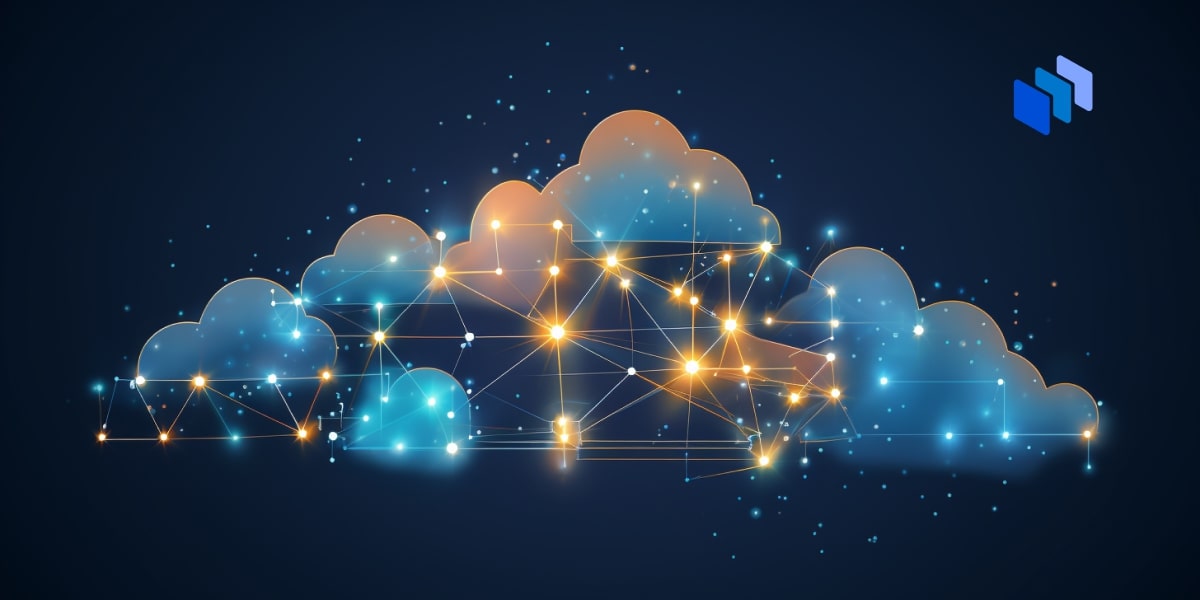-
Table of Contents
Cloud Computing Trends to Watch: Insights from Industry Experts – Stay ahead of the curve with expert analysis and predictions.
Cloud computing has revolutionized the way businesses operate by providing scalable and flexible computing resources over the internet. As technology continues to evolve, it is crucial for organizations to stay updated on the latest trends in cloud computing. To gain insights into the future of this rapidly growing field, we turn to industry experts who share their thoughts on the key cloud computing trends to watch. These insights provide valuable information for businesses looking to leverage cloud computing to drive innovation, enhance efficiency, and stay ahead in today’s digital landscape.
The Impact of Edge Computing on Cloud Computing Trends
Cloud Computing Trends to Watch: Insights from Industry Experts
The world of technology is constantly evolving, and one of the most significant advancements in recent years has been the rise of cloud computing. This innovative approach to computing has revolutionized the way businesses and individuals store, process, and access data. As cloud computing continues to evolve, industry experts are closely monitoring the trends that are shaping its future. One such trend that has gained significant attention is the impact of edge computing on cloud computing trends.
Edge computing refers to the practice of processing data closer to the source, rather than relying on a centralized cloud infrastructure. This approach aims to reduce latency and improve the overall performance of applications and services. With the proliferation of Internet of Things (IoT) devices and the increasing demand for real-time data processing, edge computing has emerged as a game-changer in the cloud computing landscape.
One of the key impacts of edge computing on cloud computing trends is the decentralization of data processing. Traditionally, cloud computing relied on centralized data centers to handle all the processing and storage requirements. However, with edge computing, data processing is distributed across a network of edge devices, such as routers, gateways, and IoT devices. This decentralization allows for faster response times and reduced network congestion, as data is processed closer to where it is generated.
Another significant impact of edge computing on cloud computing trends is the increased demand for edge data centers. As more organizations adopt edge computing strategies, the need for localized data centers closer to the edge devices becomes crucial. These edge data centers act as mini-clouds, providing the necessary computing power and storage capacity to process and store data locally. This trend has led to the emergence of new players in the data center industry, specializing in edge computing infrastructure.
Furthermore, edge computing has also sparked a shift in the way data is managed and analyzed. With traditional cloud computing, data was typically sent to the cloud for processing and analysis. However, with edge computing, data is processed and analyzed at the edge, allowing for real-time insights and faster decision-making. This shift towards edge analytics has significant implications for industries such as healthcare, manufacturing, and transportation, where real-time data analysis is critical.
In addition to these impacts, edge computing is also driving advancements in cloud computing architectures. Cloud service providers are now offering edge computing capabilities as part of their service offerings, allowing organizations to seamlessly integrate edge and cloud computing. This hybrid approach enables organizations to leverage the benefits of both edge and cloud computing, ensuring optimal performance and scalability.
As the impact of edge computing on cloud computing trends continues to unfold, industry experts predict that the convergence of these two technologies will shape the future of computing. The combination of edge and cloud computing will enable organizations to build robust and scalable infrastructures that can handle the increasing demands of data-intensive applications and services.
In conclusion, the impact of edge computing on cloud computing trends cannot be underestimated. This emerging trend is reshaping the way data is processed, managed, and analyzed, leading to the decentralization of data processing, the rise of edge data centers, and advancements in cloud computing architectures. As organizations strive to stay ahead in the digital age, keeping a close eye on these trends and leveraging the insights from industry experts will be crucial in harnessing the full potential of cloud computing.
The Rise of Multi-Cloud Strategies in the Cloud Computing Landscape
Cloud Computing Trends to Watch: Insights from Industry Experts
The cloud computing landscape is constantly evolving, with new trends and technologies emerging at a rapid pace. As businesses increasingly rely on cloud services to power their operations, it is crucial to stay informed about the latest developments in the industry. In this article, we will explore one of the most significant trends in cloud computing: the rise of multi-cloud strategies.
Multi-cloud strategies involve using multiple cloud service providers to meet different business needs. Rather than relying on a single cloud provider, organizations are now leveraging the strengths of multiple providers to optimize their cloud infrastructure. This approach offers several advantages, including increased flexibility, improved performance, and enhanced security.
One of the key drivers behind the adoption of multi-cloud strategies is the desire to avoid vendor lock-in. By spreading their workloads across multiple cloud providers, businesses can prevent themselves from becoming overly dependent on a single vendor. This not only gives them more negotiating power but also allows them to switch providers if necessary without significant disruption to their operations.
Another benefit of multi-cloud strategies is the ability to leverage the unique capabilities of different cloud providers. Each provider has its own strengths and weaknesses, and by using multiple providers, organizations can choose the best services for each specific task. For example, one provider may excel in data analytics, while another may offer superior machine learning capabilities. By combining these services, businesses can create a powerful and customized cloud infrastructure that meets their exact requirements.
Furthermore, multi-cloud strategies can improve performance and reliability. By distributing workloads across multiple providers, organizations can reduce the risk of downtime and ensure that their applications and services remain accessible even if one provider experiences an outage. This redundancy also allows businesses to scale their operations more easily, as they can quickly allocate resources from one provider to another as needed.
However, managing a multi-cloud environment can be complex. Organizations must carefully orchestrate their cloud resources and ensure seamless integration between different providers. This requires robust management tools and expertise in cloud architecture. Fortunately, many cloud service providers now offer tools and services specifically designed to simplify multi-cloud management, making it easier for businesses to adopt this strategy.
Security is another important consideration when implementing a multi-cloud strategy. With data spread across multiple providers, organizations must ensure that their sensitive information remains protected. This requires implementing strong security measures, such as encryption, access controls, and regular audits. Additionally, organizations should carefully evaluate the security practices of each cloud provider and choose those that meet their specific security requirements.
In conclusion, the rise of multi-cloud strategies is a significant trend in the cloud computing landscape. By leveraging the strengths of multiple cloud providers, organizations can achieve greater flexibility, improved performance, and enhanced security. However, managing a multi-cloud environment requires careful planning and expertise. As businesses continue to embrace cloud computing, it is essential to stay informed about the latest trends and technologies to make the most of this powerful technology.
The Role of Artificial Intelligence and Machine Learning in Cloud Computing
Cloud Computing Trends to Watch: Insights from Industry Experts
The Role of Artificial Intelligence and Machine Learning in Cloud Computing
In today’s rapidly evolving technological landscape, cloud computing has emerged as a game-changer for businesses across industries. As organizations increasingly rely on cloud services to store, process, and analyze vast amounts of data, it is crucial to stay abreast of the latest trends shaping this dynamic field. One such trend that has gained significant traction is the integration of artificial intelligence (AI) and machine learning (ML) into cloud computing systems.
AI and ML have revolutionized various sectors, from healthcare to finance, by enabling machines to learn from data and make intelligent decisions. When combined with the power of cloud computing, these technologies unlock a new realm of possibilities. By leveraging the scalability and flexibility of cloud infrastructure, AI and ML algorithms can process massive datasets and deliver real-time insights, empowering businesses to make data-driven decisions with unprecedented speed and accuracy.
One area where AI and ML are making a significant impact in cloud computing is in data analytics. Traditional analytics methods often struggle to handle the sheer volume and complexity of data generated by modern businesses. However, by harnessing the computational capabilities of the cloud, AI and ML algorithms can quickly analyze vast datasets, identify patterns, and extract valuable insights. This enables organizations to gain a deeper understanding of their customers, optimize operations, and drive innovation.
Moreover, AI and ML algorithms can continuously learn and adapt to changing data patterns, ensuring that organizations can stay ahead in today’s fast-paced business environment. By leveraging cloud-based AI and ML services, businesses can access cutting-edge algorithms without the need for extensive in-house infrastructure or expertise. This democratization of AI and ML capabilities allows organizations of all sizes to harness the power of these technologies and gain a competitive edge.
Another area where AI and ML are transforming cloud computing is in the realm of cybersecurity. As cyber threats become increasingly sophisticated, traditional security measures are no longer sufficient to protect sensitive data. By integrating AI and ML into cloud security systems, organizations can detect and respond to threats in real-time. These technologies can analyze vast amounts of network traffic, identify anomalies, and proactively mitigate potential risks. Additionally, AI and ML algorithms can learn from past attacks, enabling them to continuously improve their ability to detect and prevent future threats.
Furthermore, AI and ML can enhance the efficiency and reliability of cloud infrastructure. By leveraging predictive analytics, these technologies can optimize resource allocation, ensuring that computing resources are allocated based on demand. This not only improves performance but also reduces costs by eliminating the need for overprovisioning. Additionally, AI and ML algorithms can detect and predict system failures, enabling proactive maintenance and minimizing downtime.
As AI and ML continue to advance, their integration into cloud computing systems will only become more prevalent. Industry experts predict that AI and ML will play a crucial role in shaping the future of cloud computing, enabling organizations to unlock new levels of efficiency, innovation, and security. By staying informed about these trends and embracing the potential of AI and ML in the cloud, businesses can position themselves for success in the digital age.
In conclusion, the integration of AI and ML into cloud computing systems is revolutionizing the way businesses operate. From data analytics to cybersecurity and infrastructure optimization, these technologies offer unprecedented opportunities for organizations to gain insights, enhance security, and improve efficiency. As industry experts continue to explore the potential of AI and ML in the cloud, it is essential for businesses to stay informed and embrace these trends to stay competitive in today’s rapidly evolving digital landscape.In conclusion, industry experts have identified several key trends to watch in the field of cloud computing. These include the increasing adoption of multi-cloud and hybrid cloud strategies, the growing importance of edge computing, the rise of serverless computing, and the continued focus on security and data privacy. Additionally, experts predict that artificial intelligence and machine learning will play a significant role in shaping the future of cloud computing. Overall, staying informed about these trends can help organizations make informed decisions and stay competitive in the rapidly evolving cloud computing landscape.





